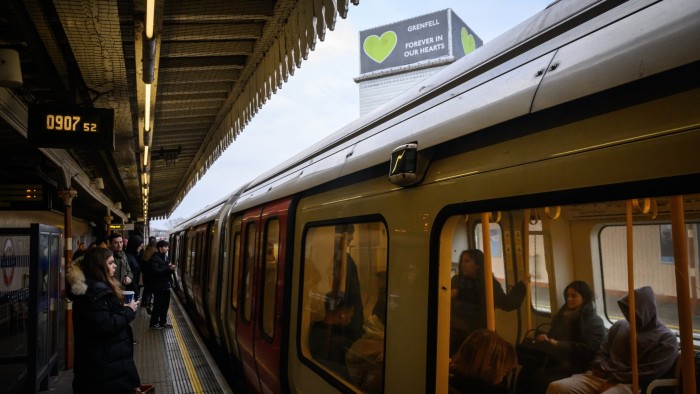Unlock the Editor’s Digest for free
Roula Khalaf, Editor of the FT, selects her favourite stories in this weekly newsletter.
The writer is the FT’s architecture and design critic
For a few months after the fire in 2017 that killed 72 of its residents, Grenfell Tower loomed like a charred skeleton over London. It cast a shadow over the city’s inequities in housing, a reminder of lax building regulations and the fire brigade’s tragic response, advising people to stay in their homes and wait for help that never came.
First as a blackened frame and then as a white-tarp-clad slab bearing a giant green heart, the tower has stood as a ghostly tombstone haunting every journey west out of central London, by road, rail or Tube. Its presence condemns the inadequacies of British construction and our seeming inability to accelerate the building of social — or any — housing at scale.
Angela Rayner, the deputy prime minister, said last week, after what now looks like rather cursory consultation with survivors and families, that the remains of the burnt-out tower would be dismantled. It was followed by an inevitable clamour about lack of consultation and disrespect. But the structure is deteriorating.
When the 24 storeys of the tower were completed in 1974, it joined a smattering of other high-rises on the west London skyline, the tallest of which is nearby. The taller Trellick Tower was designed by Ernő Goldfinger and completed two years earlier. At the time, each tower contained only council housing. They came towards the end of a massive spurt of construction by local authorities — in part to replace second world war damaged or decrepit stock.
That era now looks almost impossibly distant. The fire (which followed a shoddy refurbishment in 2015-16) led to a public inquiry laying bare the shocking state of the UK’s construction industry and its wholly inadequate regulation. The Building Research Establishment, which should have been responsible for ensuring the safety of materials, had been privatised in 1997 and was now in effect dependent on the manufacturers for business. Contractors and suppliers took full, cynical advantage. Architects were lazy and compliant. The local authority, Kensington and Chelsea, was criticised for cosmetic changes undertaken in part to make the concrete tower look more acceptable to increasingly wealthy neighbours. And somewhere at the bottom of the priorities were the residents who might, before the tragedy, have been seen as a lucky few, having secured subsidised housing in a mixed and lively central London neighbourhood.
A block in which dozens have died is a sensitive thing. Alongside whatever physical proposal is mooted for the site — which must surely include public housing — perhaps a green space might be nurtured, an echo of that green heart on the tarpaulin. Late modernist high-rise council housing suffered from a notorious neglect of the public space around it; parking, bin storage and indeterminate zones that belonged to no one. The value of land is clearer today than it was in a city still perforated with bomb-sites. We should reflect on the real value of public space: a playground, a park, a pond, a piazza, each a sign of life to counter the memories of death.
At present, Grenfell Tower stands like a marker of a particularly British inability to rebuild. Of course it will be painful for survivors and neighbours, but it is also toxic for a city to constantly contemplate its own tragic failures — while neglecting the dearth of decent housing. Cities change and evolve but their streets and spaces do not have to forget: names, places, walls and memorials can be inscribed to prevent that.
The real memorial to those who died would be a complete rewriting of the building regulations, which remain open to abuse, and a kick-start to social housebuilding. If the headstone is to go, something needs to replace it. But this might be more widespread, more able to facilitate good, thoughtful architecture and construction and far more effective in ensuring it can never happen again.
https://www.ft.com/content/094b5f37-7e67-459a-aeeb-87269331fc76


